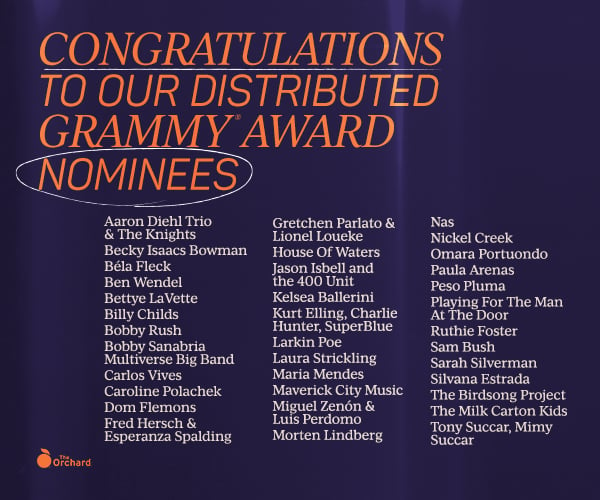India’s music business has become a global cultural force, but it’s being held back by poor copyright compliance, a lack of awareness of music rights and a lack of legal clarity.
That according to professional services company EY, via an in-depth report published in the past few weeks.
The report from EY India found that music publishing revenues in the country grew 2.5-fold in three years, rising from INR 3.4 billion (USD $40.8 million at current exchange rates) in 2019-2020 to INR 8.84 billion ($106.1 million) in 2022-2023.
And the industry could potentially see another doubling of music publishing revenues by 2026-27, to INR 16.9 billion ($202.8 million) – if the industry is able to address the issues holding it back, EY said.
One key to this is addressing the “abysmally low” copyright compliance rate of just 1.2%, the report said.
Only 71% of music DSPs in the country have a license from the Indian Performing Right Society (IPRS), while 56% of short video platforms have a license. Fewer than 1% of retail establishments, hotels and restaurants have a license.

Among TV channels, 796 out of 905 aren’t licensed with IPRS, while 1,033 of 1,035 radio stations have not taken a license from the copyright society, “some citing the lack of legal clarity, others believing that their payment for the use of sound recordings includes the payment of publishing right,” the report said.
“Consequently, while India generates a majority of its publishing revenues from digital media, it lags other developed markets as regards broadcast, public performance, etc.,” the report stated.
It said copyright compliance is “a major pain point for music publishing because the question of whether publishing rights need to be paid is still up for debate in the courts (in the case of radio broadcasters) or is being contested by some major Indian users. We are given to understand that most Indian companies who operate in international markets, and international players who operate in India, have fully complied and are paying the publishing royalties.”
The report explains that the global practice of separating the rights in sound recordings and the rights in lyrics and musical compositions “has not been followed in India” due to court rulings that favored movie producers in music rights. Music in films constitutes an “overwhelming” 70% to 80% of the Indian music market, the report states.
“Indian music labels, big and small, negotiated master and music publishing as a single right,” the report notes.
A series of amendments to the country’s copyright law, introduced in 2012, created a right for the authors of musical works to “an equal share of royalty” from the exploitation of a sound recording, bringing Indian copyright law more in line with international norms.
However, India has seen a number of contradictory court rulings on the matter, including a 2021 ruling by the Delhi High Court in a case between IPRS and a radio station which asserted that the 2012 law doesn’t require separate royalty payments to music publishers. A 2023 ruling by a court in Mumbai held that radio stations do, indeed, have to pay music publishing royalties, regardless of whether they pay sound recording royalties.
Besides the lack of clarity over music publishing rights, India’s music business is also struggling with a lack of awareness of music rights among artists, the EY report said.
The report found that around 13,500 music creators have registered with IPRS, out of a potential pool of 60,000.
“Awareness is still a problem with music creators. Industry groups say that many are not even aware that they own rights, and that their rights can be monetized only by registration of their work,” the report stated.
“Many composers still don’t know the complete benefits of signing up with an authors’ society. This is especially true for new and emerging authors who find other ways to make money, like brand sponsorships, creating content for social media, gig work, and streaming platforms.”
The report included the results of a survey of 500 creators, which found that artists income is “unpredictable and often limited.” Some 60% of artists are able to make a living off their music alone; only 56% said they have access to the equipment and infrastructure needed to produce music; and 35% of respondents reinvested more than half their music income on the equipment needed to make music.
“Awareness is still a problem with music creators. Industry groups say that many are not even aware that they own rights, and that their rights can be monetized only by registration of their work.”
EY India
Creating content for movie producers and labels was the top source of income for artists, with live performances being the second-largest. Only 166 of the 500 respondents reported earning publishing royalties.
The EY report recommended “simplifying compliance” as a way to grow revenue for music publishers and artists, including simplifying the “quantification, invoicing, collection and reporting process.”
Additionally, “there is a need to enhance music education capabilities in India, where it is currently unorganized and not standardized.”
The report estimated that India’s music industry generates INR 120 billion ($1.44 billion) in revenue per year, amounting to 6% of the country’s media and entertainment industry.
That’s roughly the same percentage as in the US, where the music industry ($43 billion in 2022) makes up just under 6% of the $717-billion media and entertainment industry.Music Business Worldwide





